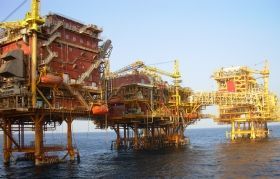A new report from the National Academies of Sciences, Engineering, and Medicine identifies strategies for improving the reliability of bolts used in offshore oil and gas drilling rigs, thereby reducing the risk that a bolt failure could cause a spill of oil, drilling fluids, or natural gas into the environment. Although the oil and gas industry has made important advances in improving the reliability of bolts, there are multiple opportunities for the industry and the U.S. Department of the Interior’s Bureau of Safety and Environmental Enforcement (BSEE) to work together to further improve reliability and safety culture, the report says.
Bolts and other fasteners are an integral part of undersea equipment in offshore oil rigs, including for critical pieces of safety equipment such as blow-out preventers (BOP). No major oil spills have resulted from the failure of a bolt or fastener, but there have been minor oil releases and near misses caused by unexpected bolt failures. Such incidents illustrate a compelling need for augmenting the regular inspection with an industrywide continuous monitoring program of bolts that have shown issues, the report says; currently there is no standard industrywide program to inspect bolts that have failed or are being replaced, such as after the five-year inspection required for BOPs.
BSEE could proactively work with the oil and gas industry to construct a comprehensive road map of key objectives and priorities to be implemented by the industry, the report says. Industry should have a large role in determining the priority for addressing potential improvements.
The road map could include sections on:
- investigating bolting cluster failures using a large-scale, fully instrumented test rig that simulates undersea conditions on fasteners;
- researching and developing innovations that could significantly advance the reliability of offshore fasteners in critical service;
- identifying gaps in current standards and obtaining the necessary data to guide updates to the standards; and
- promoting a strategic vision for the safety culture throughout the oil and gas industry. This would include collecting and disseminating information about fastener performance, failures, and near misses, and using this information to guide roadmap priorities.
Read more at: National Academies of Sciences, Engineering, and Medicine
Image: ONGC Oil and Gas Processing Platform
CREDITS: Nandu Chitnis


